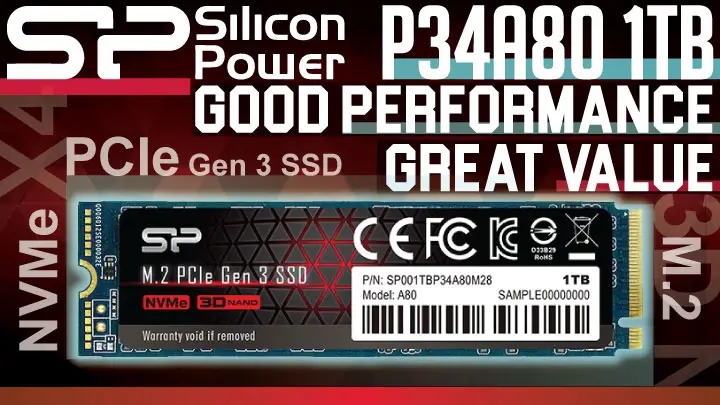Heat’s Impact On Performance
To investigate the impact has on overall performance we have used a slightly modified version of our standard IOMeter test. Precisely we have run 8 test runs per device (1,4,16,64,128,256 queue depth) each test having 8 parts, each part lasting 60 min w/ an additional 20 second ramp up. The 6 subparts were set to run 100% random, 75% read 25% write; testing 512b, 4k,8k,16k,32k,64k size chunks of data. When each test is finished IOMeter spits out a report, in that reports each of the 6 subtests are given a score in I/Os per second. The results for the first two test runs/hours are discarded and only the last 6 run reports are averaged.
The three devices in the chart are a sample M.2 SSD installed in open test bed with no cooling and underneath a large (and hot running) video card, the same M.2 SSD that has been installed in a PCIe adapter card w/ heatsink and active cooling via a 120mm fan pushing air over both sides of the M.2 card, and a MX500 1TB 2.5-inch device installed in the same system with standard cooling for the hard-drive bay. These three examples represent the best- and worst-case scenario for the M.2 SSD with the 2.5-inch MX500 results representing a base line for comparative purposes only.
![]()
Where this is a double-sided M.2 device, and is also a high-performance M.2 to boot, it should come as no surprise that it can indeed run hot. This is the weakness of the Silicon Power P34A80 series and the thin heat spreader included on only one side does not do much good. This is simply not a series that we would stick underneath a video card and expect to get stellar results from. Put another way, it is a high-performance M.2 drive so you cannot treat it like a cool running SATA M.2 drive.
By the same token, the thermal limiting it exhibits is not all that bad. By opting for more reliable BiCS 3 TLC that is only 64-layers thick (per level) heat is not as large a concern as it is with say a Crucial P1 that makes use of QLC NAND. Basically, for most people the lowered performance will not be all that noticeable (as it still is relatively ‘fast’) but if it does become noticeable… a cheap heatsink and maybe a spot cooling fan will easily negate the lack of stock cooling abilities of the P34A80 series. Put another way these results are pretty much what we expected to find and should pose no serious concern if just a bit of forethought and effort is done by the new owner.










